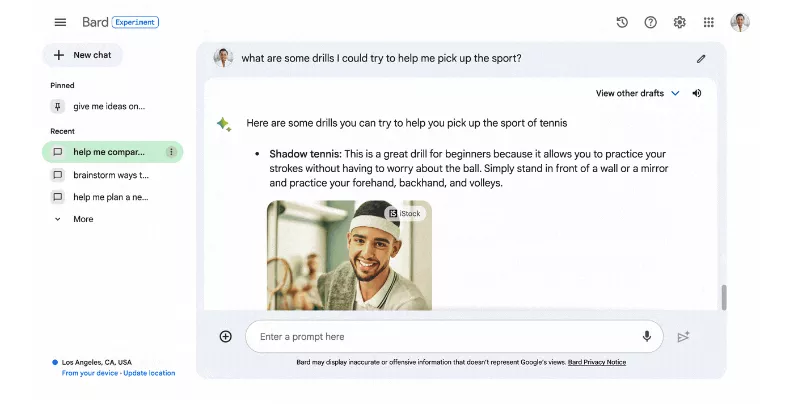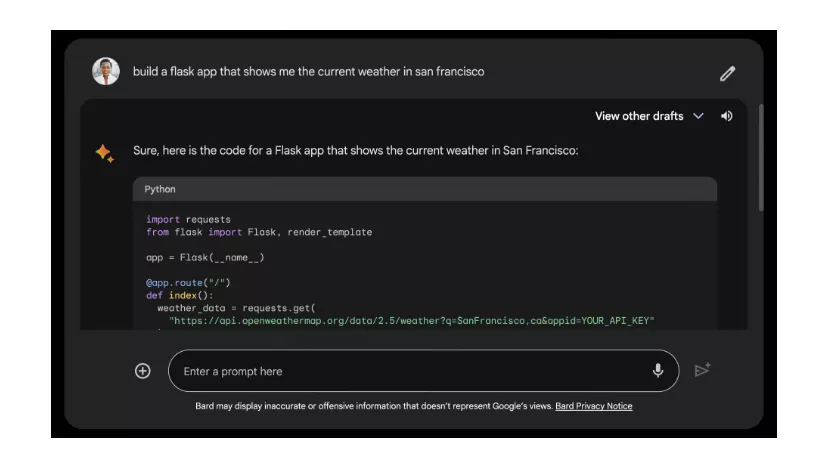Key Takeaways
Google's AI language model, the Bard, expands to over 40 languages and new regions.
New features include conversation organization, image prompts, shareable links, listening capability, and response customization.
Google has made its AI language model called Bard available in many more languages and places around the world.
Bard can now understand and respond in over 40 different languages, including Arabic, Chinese, Hindi, and Spanish. This allows many more people who speak these languages to use and benefit from Bard.
In addition to the new languages, Bard is now usable in new geographic regions too. People in countries like Brazil and multiple nations across Europe can now access and interact with Bard.

Bringing Bard to Europe was challenging at first, as there were concerns about new AI technologies in that part of the world.
However, Google worked closely with AI experts and promoted responsible and ethical practices for developing AI. This helped address concerns and allowed Bard to launch successfully across Europe.

What’s New?
Google didn't just expand where Bard is available, they also added some helpful new capabilities.
One new feature lets users better organize their conversations with Bard. They can now pin or rename chat histories, making it much easier to find and return to previous questions and responses later on.

Another enhancement makes it possible to export any code generated by Bard to more coding platforms beyond just Google Colab. Users can now also send that code to places like Replit with just a few clicks.

A really exciting addition is the integration of Google Lens, which enables users to utilize images as prompts. By uploading a picture, Bard can analyze all the visual elements and objects, and then provide relevant information or responses based on what it perceives in that image. For now, this image analysis capability only works when communicating in English, but Google plans to expand it to other languages soon.

Sharing Bard's responses got easier too with shareable links. You can now quickly get a link to any particular response, making it simple to share that information with others for collaboration or learning.

For those wanting to learn pronunciation or just prefer audible output, Bard rolled out listening capabilities. This lets you click a sound icon to hear Bard's response spoken out loud - great for language practice or experiencing things like poems or scripts.

Finally, Bard offers more personalization by allowing users to adjust the tone and style of their responses. You can choose from simple, long, short, professional or casual styles to get Bard's output tailored to your preferences.

These expansions to more languages, regions, and added capabilities represent a major step in making Google's Bard more widely accessible and useful as an AI assistant globally.
Like other AI models such as ChatGPT and Bing Chat, Bard continues evolving to provide helpful information in innovative ways to people all around the world.


